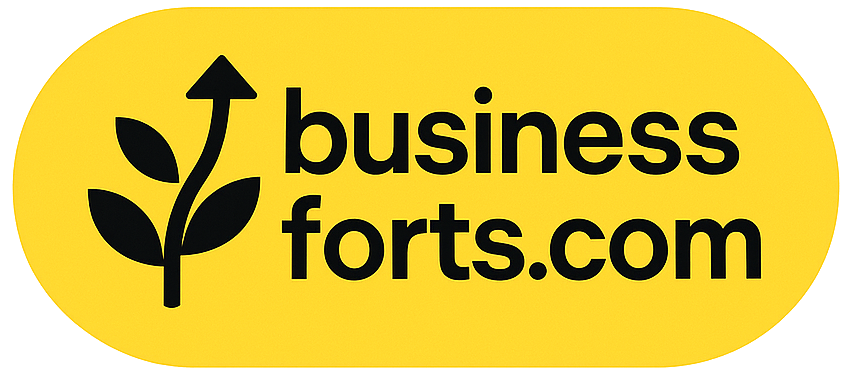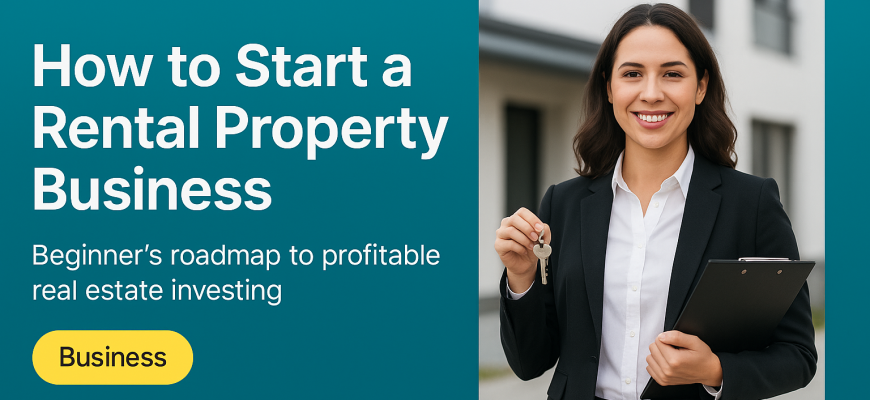If you’ve been dreaming of owning rental properties to build wealth and passive income, you’re in the right place. I’m Alex Rivers, a business coach for women, and I’m here to guide you step-by-step through this exciting journey. Rental real estate is a fantastic option for women entrepreneurs – not only can it generate steady cash flow and long-term equity, but the field (historically male-dominated) is rapidly changing. In fact, women now account for roughly 30% of property investors in the U.S., and that gap is narrowing as more women succeed in real estate. Women often bring strong skills in communication, relationship-building, and strategic planning that help rental businesses thrive. Plus, real estate investing offers flexibility to work on your own terms and create a lasting income stream. This guide will cover the basics – from setting goals and financing, to picking the right property and managing it. By the end, you’ll understand how to get started with your first rental property venture, even with no prior experience.
- Step 1: Define Your Financial Goals
- Step 2: Understand Different Types of Rental Properties
- Step 3: Explore Financing Options and Mortgage Basics
- Step 4: Market Research and Property Selection
- Step 5: Set Up Your Business Legally (LLC, Insurance, etc.)
- Step 6: Property Management Basics
- Step 7: ROI and Cash Flow Fundamentals
- Overcoming Fear and Building Confidence
Step 1: Define Your Financial Goals
Every successful business starts with clear goals. Take time to define what you want to achieve with your rental property business. Are you looking for steady monthly income to supplement your current job, long-term wealth building for retirement, or a combination of both? Perhaps your goal is to replace your 9-to-5 income eventually, or to have a nest egg for your family. Be specific – for example, “I want to acquire 3 rental houses in five years that generate $1,000 in net monthly cash flow”. Knowing your objectives will guide all your decisions, from what type of property to buy to how you finance it. It’s okay if your goals evolve, but start with a target in mind.
Along with goals, determine your budget and timeline. How much can you invest upfront, and how much risk are you comfortable with? Set a budget for your down payment and an emergency fund for repairs. Decide whether this will be a side project grown slowly, or if you plan to scale up more quickly. Remember, defining your goals isn’t just a formality – it provides focus and motivation. As the saying goes, “failing to plan is planning to fail,” so set yourself up for success by clarifying what you want to accomplish. With a clear goal, you can now map out the path to get there.
Step 2: Understand Different Types of Rental Properties
Before diving into the market, it’s crucial to learn the landscape of rental property types. Rental investments generally fall into a few categories, each with pros and cons:
-
Single-Family Homes: A standalone house rented to one tenant/family. This is a common starting point for many first-time investors. It’s often simpler to manage (one tenant, one unit) and can attract long-term renters (e.g. families). However, if the home is vacant, you have no income during that time, so factor in potential vacancy periods.
-
Condominiums/Townhomes: Individual units within a larger property or community. These can be more affordable than single-family homes and require less direct maintenance (since exterior and common areas are usually handled by a Homeowners Association). Keep in mind HOA fees and rules – they will cut into your profits and may have rental restrictions.
-
Multifamily Properties (2–4 units): Duplexes, triplexes, or fourplexes where you have multiple rental units in one building. Multifamily properties let you rent to several tenants, which can mean more income streams and less risk of total vacancy. Many women entrepreneurs start with a duplex or triplex – you could even live in one unit and rent out the others (a strategy known as “house hacking”). This way you qualify for homeowner financing and low down payments while your tenants help pay the mortgage. Managing multiple units is a bit more work, but the payoff can be higher.
-
Short-Term Rentals (Vacation Rentals): Renting out a property on platforms like Airbnb or VRBO on a nightly/weekly basis. Short-term rentals can generate higher income per month in popular areas (for example, a beach condo or a cabin rental). However, they require active management – frequent cleaning, marketing, and handling bookings – and they can be subject to local regulations or seasonal demand swings. If you love hospitality and don’t mind the hands-on aspect, this can be a lucrative niche.
-
Commercial Properties: Offices, retail spaces, or other business properties rented to companies. These typically involve larger scale investments and different leasing terms (often multi-year leases). Commercial real estate is a more advanced arena and usually not where beginners start, but it’s good to know it exists as a future option. It often requires understanding of business leases and higher capital, so for your first rental venture you’ll likely focus on residential properties.
Take time to research each type and consider which aligns best with your financial goals and lifestyle. For instance, if you value simplicity and lower time commitment, a single-family rental might be ideal. If your goal is maximizing cash flow and you’re comfortable being more involved, a small multifamily or Airbnb could work. There’s no one-size-fits-all – the “right” rental property type is the one that fits your objectives and comfort level. Understanding these options will help you make an informed choice when you start hunting for properties.
Step 3: Explore Financing Options and Mortgage Basics
Starting a rental property business does require capital, but don’t let that scare you – there are multiple financing options to fund your first deal. Many investors begin with a mortgage loan rather than paying all cash. Here are some common financing routes and basics to know:
-
Conventional Mortgage: This is the standard home loan from a bank or mortgage lender. For an investment property, lenders typically require a larger down payment and a solid credit score. Unlike buying your own home (which might allow as low as 3–5% down), investment property loans often need 15–25% down. For example, on a $200,000 rental house, you may need to bring $40,000 (20%) as a down payment. Interest rates on rental property loans can also be slightly higher (maybe 0.5% or so above a regular home mortgage) because banks view them as higher risk. Make sure your credit report is in good shape and start saving for that down payment. The upside is that if the property produces rent, 75% of the expected rental income might be counted toward your qualifying income by lenders (this can help you get approved).
-
FHA or VA Loans (House Hacking): If you don’t have a large down payment, one clever strategy is house hacking – you live in one unit of a 2-4 unit property and rent out the others. Government-backed loans like FHA and VA are intended for primary residences, but they allow purchases of 2–4 unit properties with low down payments, as long as you occupy one unit. For instance, an FHA loan might let you buy a duplex with just 3.5% down. This can be a fantastic way to start if you’re open to living in your investment for a while. You’ll get an easy financing term and can transition to full rental later.
-
Other Financing Options: Beyond traditional mortgages, you could tap into alternative ways to finance. Some people use a Home Equity Line of Credit (HELOC) on their current home to fund a down payment for a rental. Others might partner with an investor or even consider seller financing (where the property’s seller lets you pay over time). There are also local programs, private lenders, and crowdfunding platforms for real estate. These options have varying levels of complexity and risk, so if you’re a true beginner, approach with caution and do thorough research. It’s often wise to start with a more straightforward method like a conventional or FHA loan for your first property.
Mortgage basics: Whichever route you choose, it’s important to understand how mortgages work. Most investors opt for a 15 or 30-year fixed-rate mortgage so they have a predictable payment. Your monthly payment will include principal and interest on the loan, and if you escrow, also property taxes and insurance (often abbreviated PITI: Principal, Interest, Taxes, Insurance). When analyzing a potential deal, you’ll want the rental income to comfortably cover the PITI and other expenses. Keep in mind lenders may also require you to have several months of cash reserves in the bank (e.g. 3–6 months of mortgage payments saved) – this is to ensure you can pay the loan even if the property is temporarily vacant or an unexpected expense comes up.
Tip: Get pre-approved for a loan early in the process. Talking to a mortgage officer will give you a clear idea of how much you can afford, what down payment you’ll need, and any credit improvements to work on. Also, shop around for financing – compare rates and terms from different banks or credit unions. A slightly lower interest rate or cheaper fees can save you thousands over time. Financing is the lifeblood of real estate investing, so set yourself up with a solid plan to fund your purchase.
Step 4: Market Research and Property Selection
Now for the fun part – looking for the right property! Before you buy, you need to do your homework on the market and deal analysis. Smart market research will help you choose a property that meets your goals and isn’t just a “good house” but a good investment. Here are key steps for researching and selecting your rental property:
-
Study the Local Market: Focus on a target area (city or neighborhood) and learn everything you can about it. Check recent property prices and trends, typical rental rates, and vacancy rates (how often rentals sit empty) in that area. A neighborhood with low vacancy and rising rents is a good sign of strong demand. Also look at economic indicators: Is the population growing? Are there local colleges, employers, or developments attracting people? For example, if a new employer is coming to town, that might increase rental demand. On the other hand, an area with many “For Rent” signs and falling rents could be a red flag. Websites like Zillow, Realtor.com, or local MLS listings can show you current home prices and rents. You can also use tools like Rentometer to gauge average rents in a zip code.
-
Know Your Potential Tenants: Think about who you expect or want your tenants to be, and what they need. If you’re buying near a college, your tenants might be students – so properties with multiple bedrooms or safety features could be important. If you’re targeting young professionals, they might value amenities like off-street parking and in-unit laundry. For families, good school districts and safe neighborhoods are key. Understanding your target renter will help you choose a property that appeals to them (and thus rents quickly for a good price).
-
Scout the Neighborhood and Competition: If possible, visit the area in person. Drive around at different times of day. Is it quiet and well-kept or are there concerns like noise or neglect? Check proximity to schools, public transport, grocery stores – things that make a location convenient. Also, look at other rentals nearby: What condition are they in and what rent are they asking? This will give you a benchmark and help you spot how you can offer something better or different. For instance, if all the nearby rentals are older homes without modern updates, you could gain an edge by providing a nicely renovated space. As one guide puts it, analyze the local market data to identify areas with strong investment potential. You might even consider working with a local real estate agent who knows the area; they can provide insight into neighborhood trends and may know of good deals before they hit the market.
-
Evaluate Properties Critically: When you start touring homes or multifamily properties, keep your investor hat on. This means you’re not just looking at whether you like the kitchen – you’re crunching numbers and assessing the property’s suitability as a rental. Before purchasing a rental property, it’s essential to get a professional inspection to understand its condition and identify any costly repairs that might be needed soon, such as replacing an old roof or HVAC system. You should also estimate the cost of necessary repairs or upgrades and include those in your budget, keeping in mind that while a fixer-upper may have a lower purchase price, it could demand significant time and money before it’s ready to rent. Evaluate the layout and features of the property to determine if anything might make it difficult to rent or justify a good rental rate – for instance, a house without parking in a suburban area or a fourth-floor walkup could be less appealing to potential tenants. Always run the numbers on each property to assess its return on investment and cash flow; consider how much rent it can realistically bring in and whether that will cover all your expenses. As the saying goes in real estate investing, “Don’t fall in love with the house, let the math do the talking,” so stay objective and stick to your criteria that support your financial goals.
Finally, remember that patience pays off in this step. You might analyze a dozen properties before finding one that checks all your boxes – that’s normal! It’s better to be selective than to rush into an investment that isn’t solid. With thorough market research and careful selection, you’ll pick a rental property that sets you up for success.
Step 5: Set Up Your Business Legally (LLC, Insurance, etc.)
Treat your rental property venture like the business it is by taking care of the legal and administrative setup. This not only protects you but also makes your operation more professional from day one. Here are the key things to address:
-
Choose a Business Structure: Many landlords opt to form a Limited Liability Company (LLC) for their rental properties. Why? An LLC separates your rental business from your personal assets. If something happens (say a tenant injury leads to a lawsuit), your personal savings and property are more shielded – only the LLC’s assets are at stake. Forming an LLC is relatively straightforward; you register with your state and pay a fee, and you’ll get a separate legal entity for your business. Importantly, an LLC is a “pass-through” entity for taxes – it typically doesn’t pay taxes itself; the rental income and expenses simply pass through to your personal tax return. This means you won’t face double taxation as you would in a corporation. Check your state’s requirements for creating an LLC (each state has different fees and forms). You might do it yourself online or consult a lawyer if you prefer guidance. If you decide not to use an LLC for your first property, at least operate as a business – keep a separate bank account for your rental income/expenses and maintain good records. You can always transfer the property into an LLC later or form one as you grow.
-
Register for Taxes and Licensing: If you go the LLC route, you may need to apply for an Employer Identification Number (EIN) from the IRS for tax purposes. Even if you don’t, you should report your rental income and expenses at tax time (Schedule E on your tax return is used for rental properties). One of the perks of rental investing is the tax benefits – you can usually deduct mortgage interest, property taxes, insurance, maintenance, and even a paper expense called depreciation each year. These deductions can significantly reduce the taxable income from your property, sometimes even sheltering other income. Be sure to consult with a tax professional or do thorough research so you take advantage of all legal deductions. Also, check if your city requires a landlord license or rental permit. Some jurisdictions in the U.S. require landlords to register or get an inspection before renting out a unit (common in places like Philadelphia, Los Angeles, etc.). Complying with local regulations from the start will save you headaches and fines later.
-
Obtain Proper Insurance: Don’t skip insurance – it’s an essential safeguard. A standard homeowner’s policy usually won’t cover a tenant-occupied property, so you’ll need a landlord insurance policy. Landlord insurance typically covers the building itself from damages (fire, storm, etc.) and provides liability coverage if a tenant or visitor is injured on the property and you’re found responsible. It may also cover loss of rent for a period if the home becomes uninhabitable due to a covered disaster. Talk to your insurance agent about getting the right policy. It’s often only slightly more expensive than a normal home policy and well worth the peace of mind. In addition, consider requiring your tenants to carry renter’s insurance (which is cheap for them but can cover their belongings and sometimes relieve you of some liability). Finally, as your portfolio grows, you might look into an umbrella liability policy for extra protection beyond individual property coverage.
-
Legal Documents and Systems: Set up the legal paperwork you’ll use in managing the property. The most important one is a solid lease agreement. You can find standard lease templates online (many state Realtor associations provide fill-in-the-blank leases, or websites like BiggerPockets have templates). Make sure your lease complies with your state’s landlord-tenant laws and covers key points: rent amount and due date, security deposit, lease term, maintenance responsibilities, pet policies, late fees, etc. It’s wise to have a local attorney review your lease template at least once. Also, establish how you’ll handle things like tenant applications and screenings (more on that next), and set up a bookkeeping system (even a simple spreadsheet or accounting software) to track rent and expenses for the property. Good record-keeping is part of staying on the right side of the law and will make tax time much easier.
Getting your business structure and paperwork sorted out might not be the most thrilling part of launching your rental business, but it is crucial. By formalizing your venture, you protect yourself and set the stage for smooth operations. Think of it as laying a strong foundation – once it’s in place, you can build upward with confidence.
Step 6: Property Management Basics
Owning a rental property isn’t just about buying the house – it’s about managing the property and serving your tenants effectively. As a new landlord, you’ll need a plan for how you will handle the day-to-day operations of your rental business. This includes everything from finding tenants to fixing leaky faucets. Let’s break down the basics of property management:
-
Decide Who Manages: First, choose whether you will manage the property yourself or hire a property manager. Managing it yourself (often called being a “DIY landlord”) can save you the 8-10% monthly management fee and gives you personal oversight of your investment. This is very doable if you live near the property and have the time to respond to tenant needs. On the other hand, hiring a professional property manager can be great if you want a more hands-off approach or if the property is not local. They will handle tenant screening, rent collection, maintenance calls, and legal compliance for you – but you’ll pay for those services. Think about your schedule, location, and comfort level: Will you handle maintenance yourself, or hire help? How will you respond if a tenant calls at 2 AM about a burst pipe? Asking these questions upfront will clarify the management route that’s best for you. There’s no wrong answer – just what fits your life.
-
Finding and Screening Tenants: If you have a vacant property, the first task is to find a good tenant. This involves marketing the rental – you can post ads on platforms like Zillow, Trulia, Craigslist, Facebook Marketplace, or specialized sites like Apartments.com. Good photos and a nice description highlighting the home’s features will attract interest. Once applicants start coming in, screen them carefully. This is one of the most important parts of property management. A thorough screening includes: a rental application, credit check, background check, employment/income verification, and references (especially past landlords). Always follow fair housing laws – it’s illegal to discriminate against applicants based on race, religion, gender, etc., so focus only on legitimate criteria like income, credit, and rental history. Trust your gut but also verify facts. It’s better to take a bit longer to find a reliable tenant than to rush and end up with someone who doesn’t pay or mistreats your property. Many new landlords learn the hard way that a bad tenant can turn your dream into a nightmare, so screen, screen, screen!
-
Setting the Rent and Policies: Research market rents (which you likely did in Step 4) to price your unit competitively. Don’t try to squeeze every last dollar if it means pricing above market – a slightly lower rent can attract more interest and a larger pool of applicants to choose from. Decide on key policies: Will you allow pets? (Pet-friendly rentals can charge pet fees or deposits, but weigh potential damage vs. a larger tenant pool.) How will you handle utilities – are any included or is it entirely tenant-paid? Clarify these details and include them in your lease and listing. It’s better to set expectations clearly from the start.
-
Maintenance and Repairs: As a landlord, you’re responsible for keeping the property in safe, habitable condition. That means you should respond promptly to maintenance requests and plan for regular upkeep. It helps to assemble a reliable team of contacts – like a handyman, plumber, electrician – before you urgently need one. Budget for ongoing maintenance (a common rule of thumb is to set aside around 1% of the property value per year for maintenance, or about 5-10% of the monthly rent for repairs). Also plan for the big-ticket items that wear out over time: roof, appliances, carpet, paint, etc. Those will hit every so often, so saving a portion of your cash flow for capital expenses is wise. If you’re managing yourself, learn basic fixes (like how to troubleshoot an AC or a leaky toilet) – even if you’ll call a pro, knowing the basics helps you understand urgency and costs. If you hire a property manager, they’ll coordinate maintenance with their preferred vendors, but you’ll still need to approve major expenses.
-
Rent Collection and Finances: Decide how you will collect rent. In the modern age, it’s easiest to do this online. There are many apps and platforms (some free) for landlords to collect rent electronically – for example, Cozy (now integrated with Apartments.com), Avail, Zillow Rental Manager, or even just setting up payments through Zelle/PayPal. Online payments are usually secure and fast, and they provide a record of transactions. Whatever you choose, have a consistent system and enforce it. If rent is due on the 1st, outline any grace period and late fee in the lease and stick to it – being consistent will set the tone that this is a professional arrangement. Also, keep a ledger of income and expenses for the property. This can be as simple as a spreadsheet or as robust as property management software. Good financial tracking will let you monitor your cash flow (and will be essential come tax season).
-
Know Landlord-Tenant Laws: Finally, be aware of the basic landlord laws in your state and city. These laws cover things like how much you can collect as a security deposit, how quickly you must return the deposit after move-out, eviction procedures if ever needed, and habitability standards. For example, many states require you to provide things like heating, hot water, and maintain locks for safety. If a tenant stops paying rent, there are legal steps to follow – you generally can’t just change locks or shut off power (that’s illegal virtually everywhere). While we hope you never have to deal with an eviction, knowing the proper process will protect you. A great resource is the Landlord/Tenant Act for your state (often available on state government websites) or joining a local landlord association which can provide guidance.
Being a landlord is a learning experience, especially in the beginning. You’ll develop systems and find what works best as you go. By treating your tenants with respect, responding to issues promptly, and staying organized, you’ll build a positive reputation and make your rental operate smoothly. And remember, even if challenges arise (they always do – a tenant might call when the plumbing fails or an appliance breaks unexpectedly), with each problem you solve, you’re gaining valuable experience that will make you a more confident real estate entrepreneur.
Step 7: ROI and Cash Flow Fundamentals
Real estate is as much about the numbers as it is about the properties. Understanding ROI (Return on Investment) and cash flow basics will ensure that you make smart decisions and that your rental business is financially viable. Don’t worry – you don’t need to be a math whiz. These concepts are actually straightforward and incredibly useful for a beginner to grasp.
-
Cash Flow: This simply means the money left over each month after all expenses are paid. In rental terms, cash flow = rental income – operating expenses. For a single-family rental, your income is the monthly rent. Your operating expenses include things like the mortgage payment (principal + interest), property taxes, insurance, any HOA fees, and an allowance for maintenance and vacancies. For example, let’s say a property rents for $1,500 per month. If the mortgage, taxes, and insurance come to $1,100, and you budget $150 for maintenance and $100 for vacancy savings, your total expenses are $1,350. That would leave you $150/month in positive cash flow. Positive cash flow is the goal – it means the property is putting money in your pocket each month. If you find after doing the math that a property would be negative (expenses exceed rent), you either need to get it at a lower price, increase the rent, or choose a different property. It’s helpful to perform these cash flow calculations for each property you consider, so you aren’t going in blind. There are online rental property calculators that make this easy (more on tools later). Always remember to include all expenses in your estimates – many newbies forget things like occasional vacancy, or annual repairs – but expenses, maintenance, and vacancy costs can significantly impact your returns. Being conservative in your projections will protect you from surprises.
-
Return on Investment (ROI): ROI measures how effectively your investment is generating profit. In simple terms, it’s the percentage of your investment you get back as profit each year. One common way to evaluate rental ROI is cash-on-cash return, which looks at your annual cash flow relative to the cash you invested. The formula is: Annual Cash Flow ÷ Total Cash Invested × 100 = Cash-on-Cash ROI. Your cash invested would include things like your down payment, closing costs, and any renovation costs – basically the cash you had to put into the deal. Using the previous example: $150/month positive cash flow is $1,800/year. If you invested $40,000 of your own money (say, as down payment and closing costs), then $1,800 ÷ $40,000 = 0.045, or about a 4.5% annual return. That might sound modest, but remember that’s just the cash flow portion. Real estate often also appreciates in value over time and your mortgage balance is being paid down by the rent. So your total return (including equity gains) can be much higher. In fact, historically U.S. home prices have risen about 5% per year on average, outpacing inflation. That means while you’re getting cash each month, the property itself may be growing in value too – building your wealth in the background. If a property doesn’t show a decent ROI, you may pass on it and look for a better deal. Many investors set a minimum ROI target (for example, “I want at least an 8% cash-on-cash return”). Over time, you’ll refine what a “good deal” looks like for you.
-
Running the Numbers: When analyzing a potential rental, it helps to jot down all the numbers: expected rent, then subtract each expense category, and see what’s left. A quick rule some investors use is the 1% rule – if a property’s monthly rent is about 1% of its purchase price (for example, $2,000 rent on a $200,000 house), it might produce positive cash flow. This is a rough gauge, not a guarantee, but it can help filter deals quickly. Another metric is the cap rate (capitalization rate), which is annual net operating income / purchase price. For instance, if after expenses (not counting mortgage) you net $5,000 a year on a $100,000 property, that’s a 5% cap rate. Cap rates help compare different properties or markets: higher cap rate = higher return but often higher risk. As a newbie, focus on ensuring any deal at least pays for itself and ideally gives you some cushion. Don’t assume constant appreciation – buy on the strength of the deal as it stands now. If you’re not confident in your calculations, seek out help. There are many online forums (like BiggerPockets) where you can even ask experienced investors to double-check your numbers. With practice, evaluating the finances of a rental property will become second nature.
The bottom line is: know your numbers before you buy. A rental property isn’t a good investment just because it’s a nice home – it’s good if it will make money and meet your financial goals. By mastering basic ROI and cash flow analysis, you ensure that each property you purchase moves you closer to financial success.
Overcoming Fear and Building Confidence
Starting any new venture can feel daunting – and real estate is no exception. It’s completely normal to have fears and doubts when you’re starting a rental property business, especially as a woman stepping into a field where you might not see many others like you yet. Perhaps you’re worried about making a mistake, or you feel unsure since you have no prior experience in real estate. I want you to know two things right now: you’re not alone, and you absolutely can do this.
The rental property business can truly be life-changing. It can provide you with financial freedom, flexibility in your schedule, and the pride of building something of your own. There will be challenges, no doubt, but you are equipped to handle them. Whenever you feel uncertain, come back to your why – those financial goals you set and the vision you have for yourself. Lean on your resources and don’t be afraid to ask for help; the real estate community is generally very supportive, and most remember what it was like to be new.
So take that leap of faith. Run the numbers, trust your preparation, and go for it. Even owning one rental property is a big accomplishment that sets you on the path to wealth building. Who knows – a few years from now, you might be coaching and inspiring other women on how to follow in your footsteps. The journey you’re embarking on is empowering, and I’m excited for you. It’s time to turn those real estate dreams into reality!









